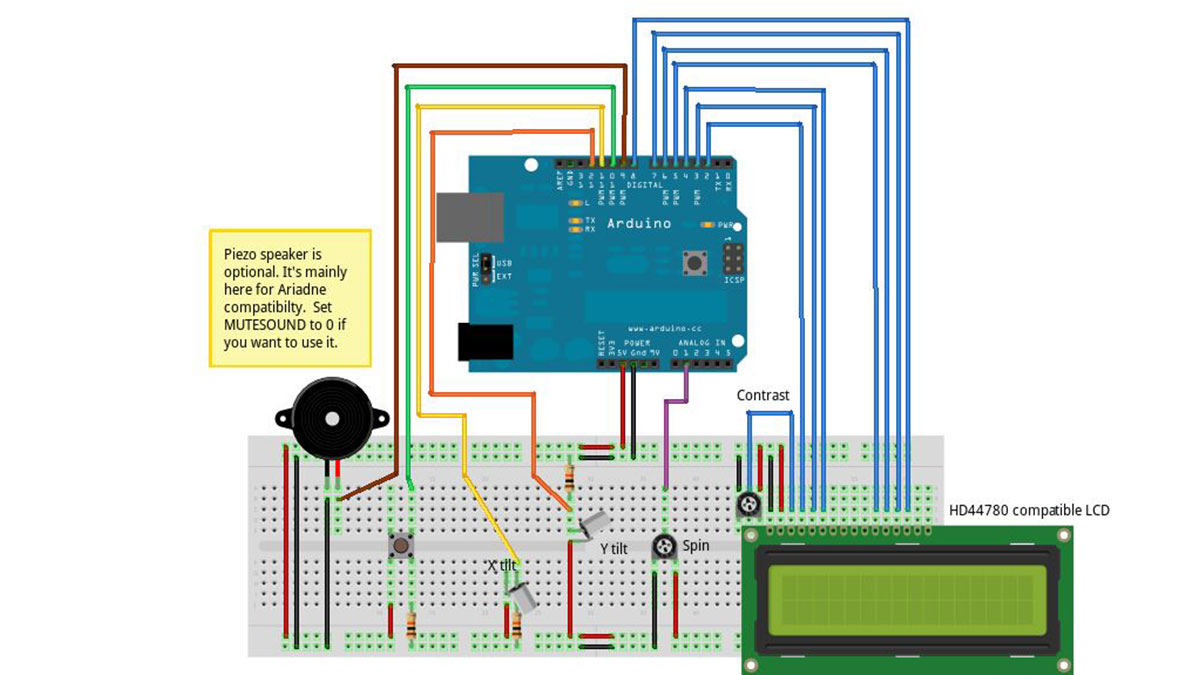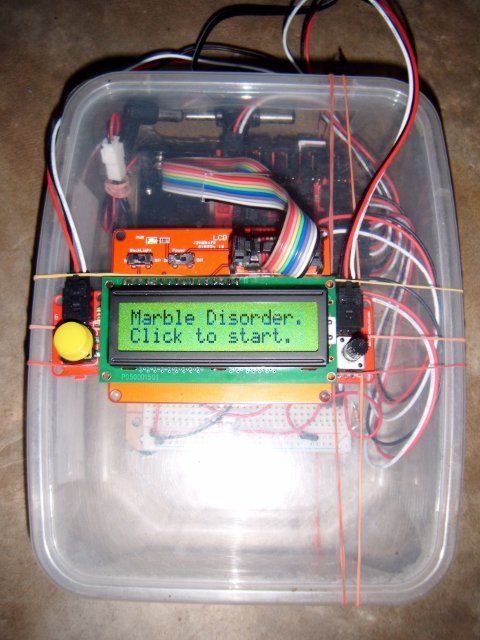Marble Disorder is a borderline case of Marble Madness 🙂
It simulates a marble maze by sensing the box’s orientation with 2 tilt switches.
Stop the press: there’s a new and more intuitive version that doesn’t require the spin knob (See video).
I keep documenting the original version below for historical purposes, but don’t watch cette – watch that
Bonus game: The Marble Disorder box is compatible with Ariadne. (the only difference is the tilt switches).
Build once, play twice 🙂
Step 1: Hardware and software
Note: l' new version is a bit different (and requires less components).
It is advised to build the new version (much more fun to play).
Hardware
You’ll need:
- An Arduino
- A Hitachi HD44780 compatible LCD display (I used 16×2, but 20×4 should work too)
- 2 tilt switches
- A pushbutton
- 3 10K Ohm resistors (pull-up for the tilt switches and the buttons)
- 2 10k Ohm potentimeters (one for spin control and [an optional] one for LCD contrast)
- Optional piezo speaker
See breadboard diagram.
Software
The code is here.
The maze generation algorithm is the same as Ariadne’s (See explanation there).
If you connect the piezo speaker, you can mute it by setting MUTESOUND to 1.
Actually – this is the default 🙂
Why have the speaker and mute it? Glad you asked:
Like I’ve mentioned, you can also run Ariadne’s code on this box.
Ariadne only beeps when you hit a wall (i.e. you’ve made a mistake). This can be avoided.
Marble Disorder beeps whenever there’s a spin (i.e. when both tilt-switches allow the marble to move to 2 different cells, and the spin potentiometer determines which one).
This can’t be avoided – so you end up with a pretty noisy game. It does help play the game – but I’m not sure it’s worth the hassle of all those beeps.
Another option is to put a switch on the piezo speaker (something my Electronic Brick shield doesn’t allow).
Step 2: Construction

I’m the last person to teach anyone how to do stuff in the physical world, and anyway – you’ll most probably need to do it in a different way (I happened to have an Electronic Brick kit and a SeedStudio harness), but cutting a transparent Tupperware clone seems like a nice and easy way to do it.
Let me know (and show some photos) if you make your own box. I’m sure it would look nicer than mine 🙂
Enjoy,
@TheRealDod
Step 3: Playing the game
Note: l' new version is a lot easier to play (so easy – it doesn’t even need instructions).
This step is kept here for historical purposes.
- An Arduino
- A Hitachi HD44780 compatible LCD display
- 2 tilt switches
For more detail: Marble Disorder – a marble maze simulator with tilt switches using Arduino

